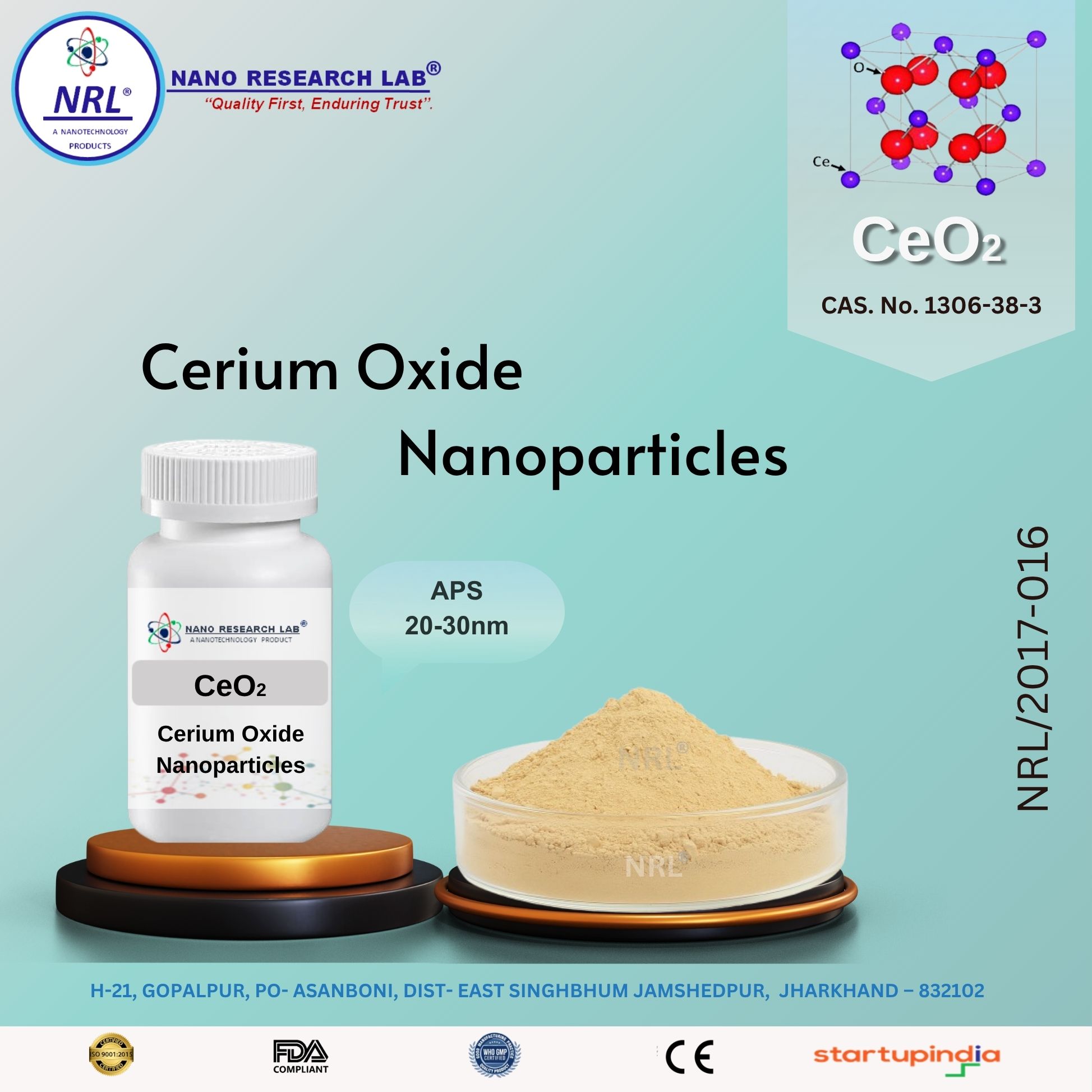
Cerium Oxide Nanopowder/Nanopowder (CeO2, 20-30nm, Purity 99.5%)
₹1475.00
Cerium Oxide Nanoparticles / Nanopowder (CeO₂, 20–30 nm, Purity 99.5%)
Technical Specifications
Property | Specification |
|---|---|
Chemical Name | Cerium Oxide (CeO₂) |
CAS Number | 1306-38-3 |
Molecular Weight | 172.11 g/mol |
Purity | ≥ 99.5% |
Appearance / Color | Pale Yellow to White Fine Powder |
Particle Size (Average) | 20–30 nm |
Morphology | Nearly Spherical / Irregular |
Crystal Structure | Cubic (Fluorite type) |
Density | 7.13 g/cm³ |
Bulk Density | 0.5–0.8 g/cm³ |
Specific Surface Area (BET) | 40–80 m²/g |
Melting Point | ~2600 °C |
Boiling Point | ~3500 °C |
Solubility | Insoluble in water; soluble in acids |
Band Gap Energy | ~3.2 eV |
pH (in suspension) | ~7.0 (neutral) |
Stability | Chemically stable under normal conditions; non-hygroscopic |
Key Features
High Purity (≥ 99.5%) ensuring excellent optical and catalytic performance.
Nanoscale Particle Size (20–30 nm) with high surface area for enhanced reactivity.
Stable Cubic Crystal Structure (Fluorite Type) providing superior oxygen storage and release capacity.
Excellent Thermal & Chemical Stability for use in harsh environments.
High Oxygen Ion Conductivity useful in solid oxide fuel cells and sensors.
Strong UV Absorption & Antioxidant Properties suitable for coatings and cosmetic formulations.
Uniform Morphology for consistent dispersion in polymeric and liquid systems.
Applications
1. Catalysts & Environmental Applications:
Used as an oxidation catalyst and catalyst support in automotive catalytic converters.
Employed in CO oxidation, water–gas shift, and fuel reforming reactions.
Oxygen storage material in catalytic and emission control systems.
2. Energy & Fuel Cells:
Applied in solid oxide fuel cells (SOFC) as an electrolyte or buffer layer.
Enhances ionic conductivity and thermal stability in electrochemical devices.
3. Polishing & Glass Industry:
High-efficiency abrasive for precision polishing of glass, lenses, and semiconductor wafers.
Used in glass decolorization and UV-blocking coatings.
4. UV Absorbers & Protective Coatings:
Incorporated into UV-blocking coatings, paints, and sunscreens.
Prevents degradation and oxidation of polymer surfaces.
5. Biomedical & Antioxidant Research:
Investigated for free-radical scavenging and neuroprotective effects.
Used in drug delivery and biosensor applications (research grade).
6. Nanotechnology & Advanced Materials:
Suitable for nanocomposites, photocatalysis, and gas-sensing applications.
Excellent redox cycling ability (Ce³⁺/Ce⁴⁺ transition) for smart materials development.
